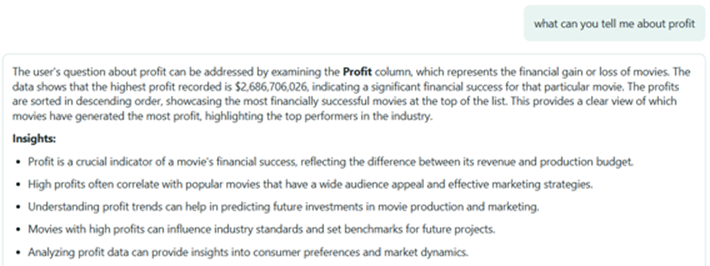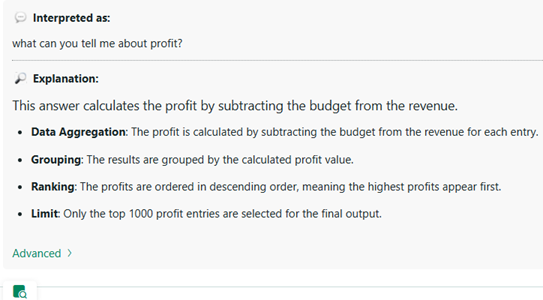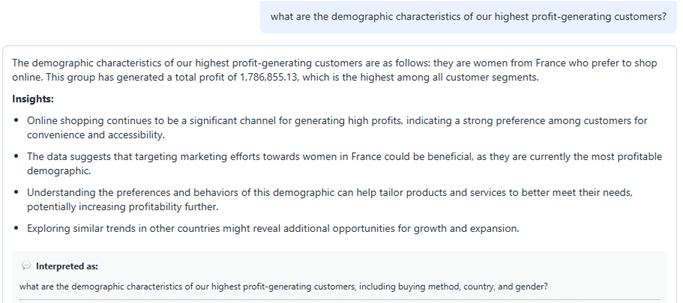Strategy ONE
Ask Open-Ended Questions
Beginning in Strategy One (September 2025), enhanced bots are available out of the box and have been renamed to agents to reflect the improvements and advancements.
-
For details on the 2.0 enhancements, see Agent Enhancements.
Starting in MicroStrategy ONE (September 2024), agents, Auto Answers, and Auto Dashboards recognize and answer open-ended business questions. This capability empowers users by delivering detailed, contextually relevant responses to broad or exploratory queries. Unlike straightforward questions that seek a specific piece of data, open-ended questions often require a more comprehensive understanding and presentation of information.
Auto addresses open-ended questions by exploring multiple facets of the inquiry, typically focusing on key aspects to provide a more comprehensive commentary on the subject. This enhancement is especially valuable when users want to explore data from various perspectives or when they aren't sure what specific information they need. For instance, if a user asks, "Tell me about the sales performance in different regions," the response can encompass an overview of revenue trends, insights into key product categories, and an analysis of customer segments across those regions.
Starting in MicroStrategy ONE (December 2024), instead of receiving three separate answers with a narrow value range, a single comprehensive answer is provided. To see additional data, follow up on the response.
For example, you ask, "What can you tell me about profit". This is interpreted as an open-ended question, so Auto attempts to surface multiple interesting pieces of relevant info. The description defines profit, provides the highest profit value, and explains how the most profitable movies highlight the top performers. Crucial insights display as bullet points.

Click Interpretation ![]() . The response is interpreted as a query to provide information about profit, including its calculation (revenue minus budget), data aggregation, grouping, and ranking in descending order. Only the top 1000 profit entries are selected.
. The response is interpreted as a query to provide information about profit, including its calculation (revenue minus budget), data aggregation, grouping, and ranking in descending order. Only the top 1000 profit entries are selected.

Another example of an open-ended question is shown below, using attributes rather than focusing on a metric. The question is "What are the demographic characteristics of our highest profit-generating customers?". This image shows just the summary sentence of the interpretation, indicating that the demographics include buying method, country, and gender.

